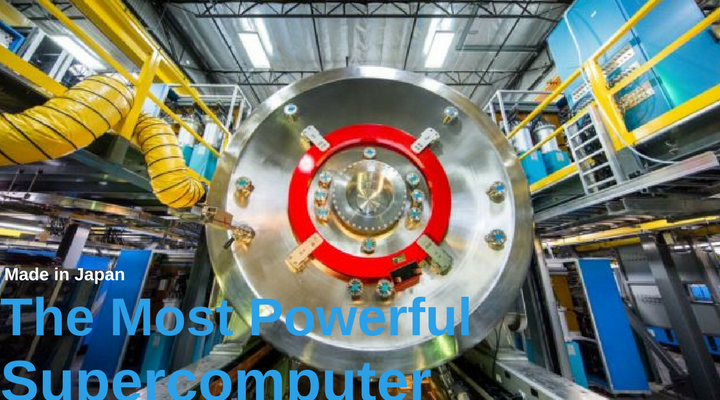Japan Building The Most Powerful Supercomputer to Fight Research
The Japanese National Institute of Quantum and Radiological Sciences (QST) has contracted Cray to supply the supercomputer Cray XC50. His powers will be sent to the competition for research and support of the international project ITER. One of the tasks of the project is to demonstrate the possibilities of commercial use of a thermonuclear reactor.
- More details about the appointment of a supercomputer and its configuration, we will discuss further.
As reported in The Verge, the new, as yet unnamed, computer system Cray, will be placed at the Rokkasho Institute (Rokkasho Fusion Institute), which is engaged in nuclear research and is located in Aomori Prefecture. This is the center of the Japanese nuclear industry.

The supercomputer is scheduled to be launched in 2018. He will replace his predecessor – Helios supercomputer, with a performance of 1.5 petaflops.
Supercomputer characteristics
The peak performance of the new supercomputer will exceed 4 petaflops.
- Cray company does not disclose all the characteristics of the new machine, but it will probably work on Skylake Xeon processors and support NVIDIA Tesla cards.
- The senior editor of the Top-500 resource on the basis of the declared capacity of the machine also suggested that the supercomputer will have more than a thousand two-socket nodes.
To date, the most powerful supercomputer Cray XC50 is the Swiss Piz Daint, with a performance of 25 petaflops. The new Japanese supercomputer will not compete with Piz Daint, but it can be considered the most productive machine for research in nuclear physics. Mamoru Nakano, president of Cray Japan, stresses: “The speed of work and the integrated Cray XC50 software environment will allow researchers from QST to make new discoveries faster.”
Purpose of the new supercomputer
The system will help scientists from QST conduct research in nuclear fusion and plasma physics. Access to the supercomputer will also receive about a thousand scientists from Japan and Europe. In addition, the computing power will be directed to support the international project ITER (International Thermonuclear Experimental Reactor). The project involves researchers from China, the EU countries, India, Japan, South Korea, Russia and the United States.

The goal of the project is to create the world’s first thermonuclear reactor by 2035 and to prove the possibility of obtaining electricity using thermonuclear fusion. The construction of the reactor, which consists of 1 million components, is being carried out in the commune of Saint-Paul-lès-Durance in the southeast of France.
A short video review:
It’s not yet known what exactly the new Japanese supercomputer will do for the ITER project. However, Mamoru Nakano argues that “a supercomputer will help to uncover the potential of thermonuclear energy as a reliable energy resource.”
Another Japanese project – AI Bridging Cloud
Back in April 2018, Japan plans to launch the most powerful supercomputer in the world – AI Bridging Cloud (ABCI). Its performance will be 130 petaflops, which is more than the Chinese Sunway TaihuLight (93 petaflops).
- ABCI will be supplied with graphics accelerators Tesla V100 based on the Volta architecture, whose tensor cores “give out” on the tasks of machine learning for 120 teraflops. It is assumed that the system will have a parallel storage of 20 Pbytes and consume 3 MW.
According to Satoshi Sekiguchi, general director of the Japanese National Institute of Advanced Industrial Science and Technology, ABCI will help Japanese companies develop and improve unmanned vehicle technologies, develop areas of robotics and medicine, as well as artificial intelligence systems.





